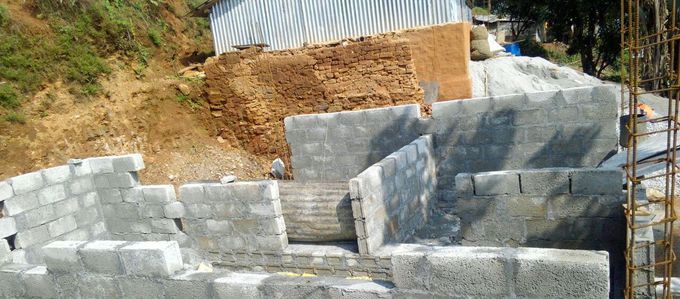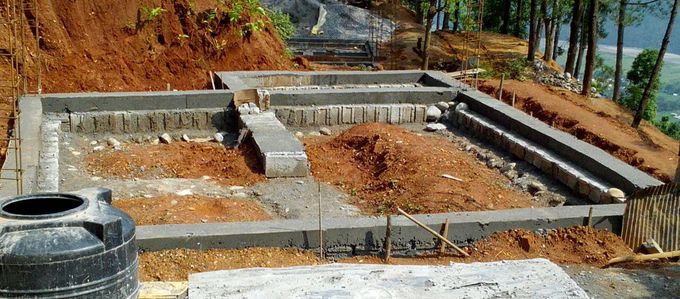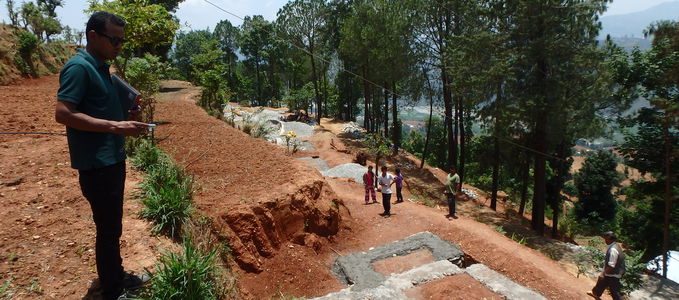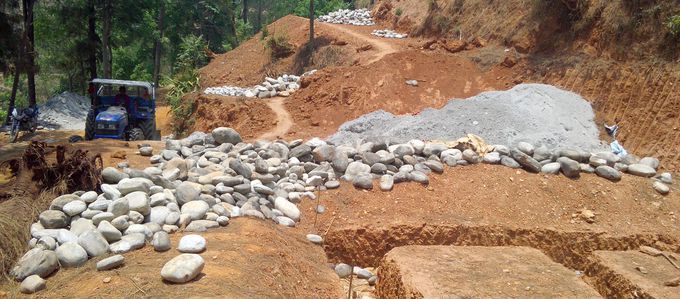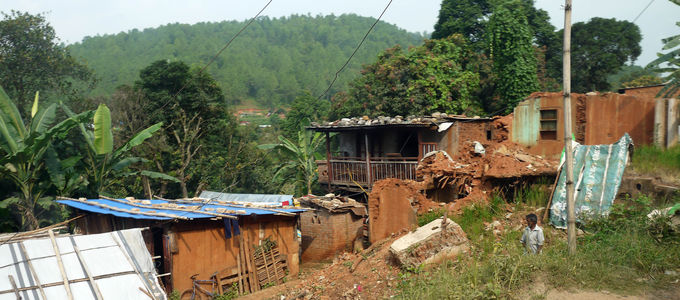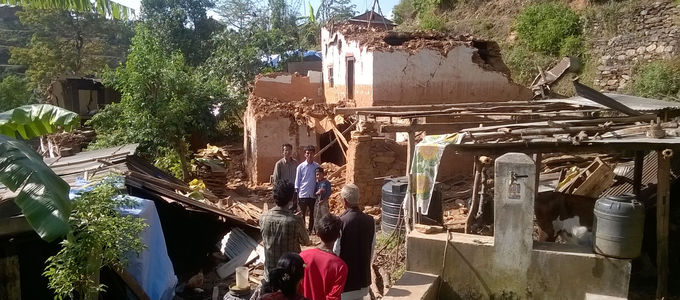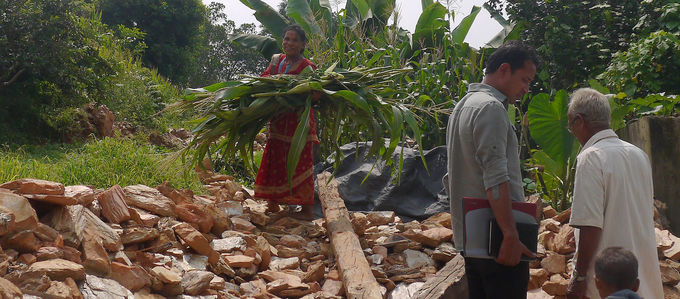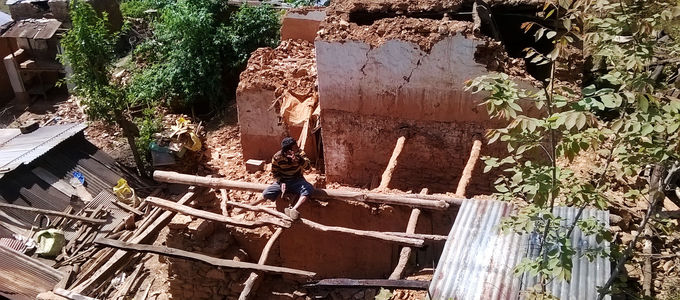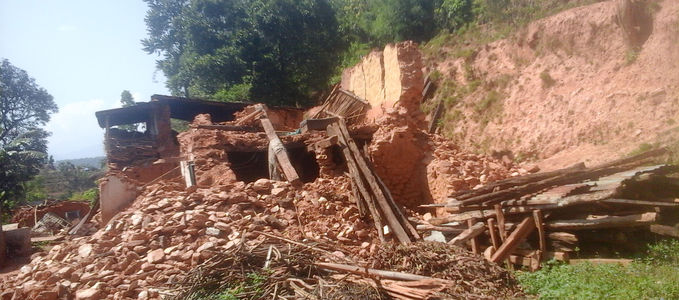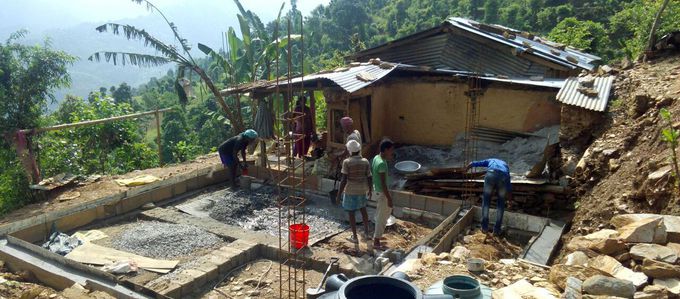
Emergency aid was quick, but the reconstruction process is taking its time. More than a year after the devastating earthquake in Nepal, the situation in the country is still far from normal. Following is a look at a small village in the foothills of the Himalayas.
Travelling up the mountain to the village of Sipapokhare, Christy Eckhardt’s thoughts are focused on the reconstruction project. She is responsible for aid projects and charitable giving in the New Apostolic Church Canada and is on her way to verify the progress in Sipapokhare. The earthquake and the repeated aftershocks that struck Nepal in April and May 2015 had affected all the houses in the small village.
Life after the earthquake
After months of political upheaval, pre-monsoon heat has brought new challenges such as water shortages. People have to walk for kilometres to collect water. In spite of this, water trucks spray water on the roads—albeit sparingly—in order to combat the huge clouds of choking and blinding red dust that are kicked up as trucks rumble through the villages.
When the vehicle comes to a stop in the village of Sipapokhare, the silence is broken by the cries of an infant. Christy steps out of the 4×4 and sinks into the brilliant red dust. She makes her way down the steep slopes and finds the wailing infant. The youngest has the loudest voice. Four generations live in one hut: great-grandmother, grandmother, mother, and daughter. A typical picture: the men work in towns and cities during the week to support their families.
The foundations are plotted and excavated
Christy Eckhardt notices that the landscape has changed significantly since her last visit to the project site in August 2015. The foundations of the 25 new houses are plotted and excavated. The project is being managed by New Apostolic Trust of Nepal, a local aid organization. The project is receiving financial support from the Swiss aid organization NAK Diakonia, from NAK-karitativ from Germany, and from the District Church of Canada, who is responsible for the pastoral care of the New Apostolic Christians in Nepal.
But the work in Sipapokhare is not nearly as far as they had hoped to be by now. Already the pre-construction phase of the project took longer than planned, the project co-ordinator says: “There were delays in finalizing the design of the homes as we waited for the release of new earthquake resistant building codes. This information had to filter down to each Village Development Committee (VDC). Once the design was approved, the villagers decided where to place the structure on their property. They wanted to excavate the sloped areas and create new level areas for the new homes. An excavator was brought to the project site and cut new level terraces into the steep slopes. The initial village plan was then modified to the satisfaction of the VDC.”
Hope despite obstacles
Carved into the newly exposed red dirt, are the plots for each house. One can now visualize the layout: two bedrooms, kitchen, living area and bathroom. The construction work is hard. It is difficult to navigate these steep terraces with larger equipment, so much of the work is manual labour. The villagers, who contribute to the labour, work their way up the steep inclines with baskets of stones on their backs to fill in and level the plots and make them ready for the concrete foundations and pillars.
And things will not really improve in the coming weeks and months. The monsoon is just about to begin. For now, the people still live in make-shift shelters, cobbled together from what they found in the rubble and from sheet metal that was supplied as emergency aid. They offer protection from the elements and are designed for survival, but they are not designed for living. But these shelters will protect the people also in the coming monsoon season, while the work on their new homes carries on—if necessary, under tarps.
“The rain may slow the construction progress,” Christy Eckhardt says. “But life carries on, although it is far from easy.” With the evidence of new life and the fact that new structures are coming soon, there is a sense of hope. Christy Eckhardt noted another significant change: the people are smiling.






